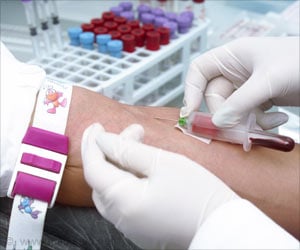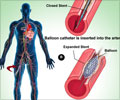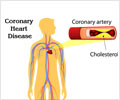
The subject of the study, known as rescue percutaneous coronary intervention (PCI), is performed when a patient's heart attack has not subsided after being treated with powerful clot-busting medications, an approach commonly used in developing countries and rural areas of the United States where access to catheterization labs are not immediately available. Researchers gathered data on 9,494 patients from the National Cardiovascular Registry's CathPCI database and analyzed records for those who underwent rescue PCI between 2009 and 2013.
The findings revealed that transradial rescue PCI was only used in about 15 percent of the rescue PCI cases performed in the United States, and bleeding was reduced in these cases. The team also found that patients who were most prone to bleeding - as determined by a 33-category risk model which accessed clinical features such as age, body mass index, preexisting heart failure, and peripheral vascular disease - were more likely to be treated via transfemoral access, which is known to result in more significant post-procedure bleeding. Of the 1,348 transradial cases analyzed, only 93 patients experienced a bleeding complication. However in the 8,146 treated with transfemoral PCI, 967 had significant post-procedural bleeding, a five percent difference between the two groups.
"We were surprised to see how few of these rescue PCI cases were approached with transradial access, given the increase in bleeding one might expect when performing a procedure on a patient who recently received thrombolytic therapy," said the study's senior author, Jay Giri, MD, MPH, an assistant professor of Clinical Cardiovascular Medicine. "Even more interesting was the finding that among the group studied, patients at the highest risk for bleeding - those who would benefit most from transradial access - were least likely to receive that procedure. This counterintuitive finding is a demonstration of the 'risk-treatment paradox,' showing that doctors in these cases made treatment decisions based on what they are most comfortable with rather than what is best for the patient."
The risk-treatment paradox describes a situation in which patients who are at the highest baseline risk for a condition are less likely to be treated aggressively for that condition. In the present case, the authors note that this finding may have been driven by decision-influencing factors such as physician training or experience.
Despite differences in bleeding rates, researchers found that there was no significant difference in mortality rates - a less than one percent variance. In addition, the team only evaluated cases where the patient was in stable condition following the clot-busting medication. Therefore, high-risk patients - those in need of assistive heart pumps - with a higher risk of death were not included in the analysis.
Advertisement
Source-Eurekalert














